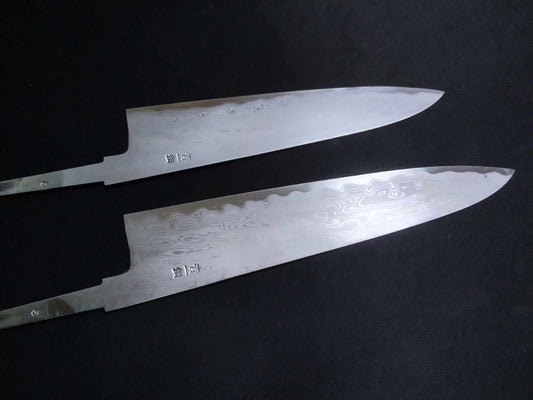
Blue Steel #1
-
Mastering the Pinnacle of Japanese Knife Steel
Born from the pure edge of White Steel #1 and refined with chromium and tungsten, Blue Steel #1 is the choice of master chefs who demand precision, durability, and long-lasting sharpness. It’s not for beginners—this is a steel that rewards skill, discipline, and care, becoming a lifelong partner in the hands of those who master it.
-
Blue Steel #1 Japanese Knife Collection
-

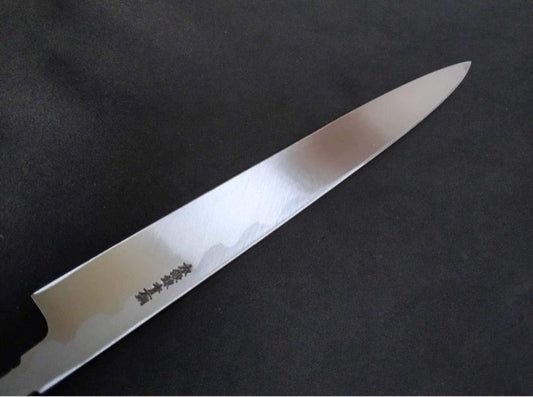 Sold out
Sold outBlue Steel #1 Yanagiba 270mm
Regular price $393.00 CADRegular priceUnit price / per -
Blue Steel #1 Damascus Gyuto 210mm- Mirror Polished Blur Finish
Regular price $584.00 CADRegular priceUnit price / per -
Blue Steel #1 Damascus Gyuto 240mm- Mirror Polished Blur Finish
Regular price From $631.00 CADRegular priceUnit price / per -
Blue Steel #1 Damascus Yanagiba(Kiritsuke) 300mm- Mirror Polished Blur Finish
Regular price $850.00 CADRegular priceUnit price / per
KIREAJI's Three Promises to You
-

1. Forged in the Legacy of Sakai
From Sakai City—Japan’s renowned birthplace of professional kitchen knives—each blade is crafted by master artisans with over six centuries of tradition. Perfectly balanced, enduringly sharp, and exquisitely finished, every cut carries the soul of true craftsmanship.
-

2. Thoughtful Care for Everyday Use
Every knife includes a hand-fitted magnolia saya for safe storage. Upon request, we offer a complimentary Honbazuke final hand sharpening—giving you a precise, ready-to-use edge from day one.
-

3. A Partnership for a Lifetime
A KIREAJI knife is more than a tool—it is a lifelong companion. With our bespoke paid aftercare services, we preserve its edge and beauty, ensuring it remains as precise and dependable as the day it first met your hand.
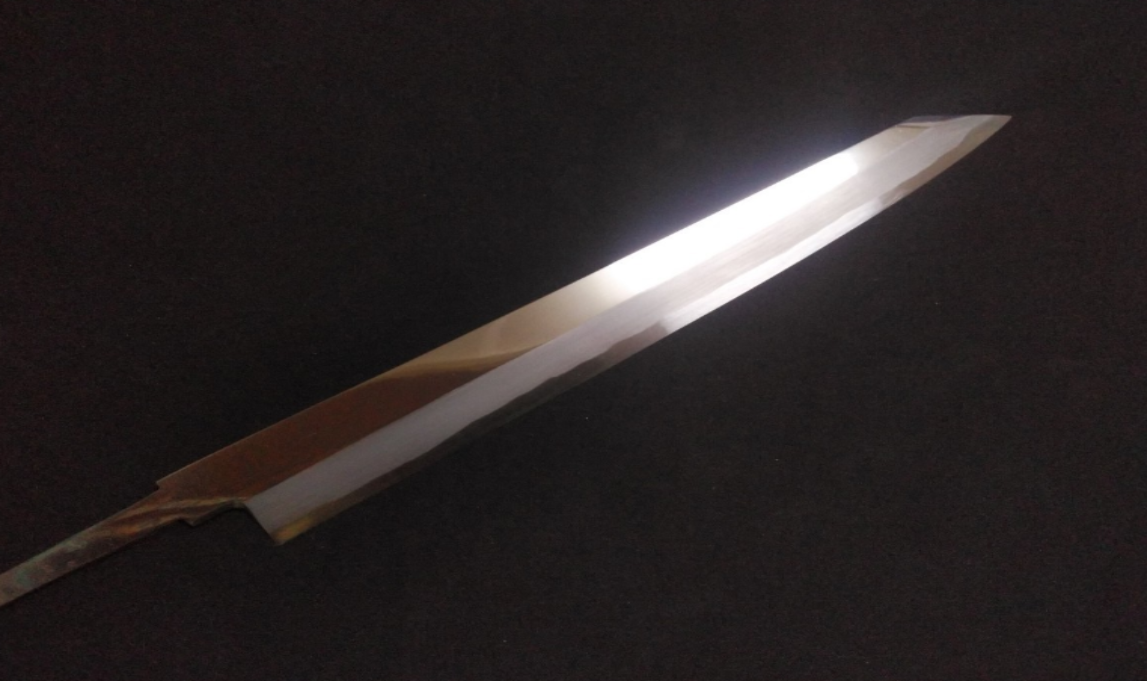
Why Many Product Photos Show Only the Blade
At KIREAJI, every knife is made to order in Sakai, Japan. Photos show the blade before the handle is attached, allowing artisans to perfect the balance and edge for your specific order. Your knife arrives fully finished — tailored just for you.

Global Delivery from Sakai
Across the world, discerning cooks seek authentic Japanese knives from Sakai — Japan’s legendary knife-making city with over 600 years of tradition.
At KIREAJI, we work alongside master artisans in Sakai to fulfill that desire, shipping genuine handcrafted knives directly from the workshop to kitchens worldwide.
Blue Steel #1 :“The Blade Among Blades” — Blue Steel #1, the Ultimate Choice for Professionals
-
Blue Steel #1 is a premium alloy steel used for high-quality Japanese knives. It is based on white steel but enhanced with a perfect balance of chromium and tungsten, giving it exceptional hardness and wear resistance. This makes it a favorite among professional chefs in Japanese cuisine and beyond for its ability to maintain a sharp edge over time.
-

Key Features: The Perfect Balance of Sharpness and Durability
Blue Steel #1 combines hardness with toughness (ductility), allowing the blade to be sharpened to an extremely thin, precise edge without chipping easily. This means it offers both outstanding sharpness and long-lasting durability — a balance that is essential for chefs who require precision and reliability.
-
Requires Skill and Experience to Master
Because Blue Steel #1 is very hard, it is more challenging to sharpen and requires careful maintenance. It is not recommended for beginners.
However, those who master its care and sharpening techniques will enjoy an edge unlike any other — the ultimate blade that elevates the quality of their cooking. -
What Professional Chefs Say About Blue Steel #1
Sushi chefs say, "Blue Steel #1 knives transform the sense of touch; you can feel even the resistance of each rice grain."
French chefs praise it for the way it "glides smoothly through delicate lamb loin fibers."
Blue Steel #1 enables chefs to fine-tune their connection with ingredients, making it a truly special steel. -

Blue Steel #1 as Your Trusted Partner
Blue Steel #1 is not just a tool; it is a partner that reflects the skills and passion of its user. With daily care and sharpening, it grows alongside the chef’s own skills.
Its lasting sharpness helps maintain focus and dedication, empowering chefs to approach every dish with sincerity. -
Summary
Blue Steel #1 is a high-grade steel combining sharpness and durability, demanding skill to handle properly. In return, it delivers top-level performance and is trusted by professionals worldwide.
As the saying goes, "A blade is an extension of its user," and Blue Steel #1 embodies this perfectly — a true masterpiece to accompany chefs throughout their careers.
What Is Blue Steel #1 ?
-

Understanding Its Composition and Characteristics
Blue Steel #1 is a high-grade alloy steel commonly used in traditional Japanese knives. Its defining feature lies in the addition of chromium (Cr) and tungsten (W) to the base material of White Steel #1, a high-purity carbon steel.
- Chromium plays a crucial role in enhancing the steel’s toughness and resilience, making the blade less prone to chipping. This allows the knife to maintain a strong yet flexible edge.
- Tungsten improves the blade’s wear resistance (edge retention). It supports hardness while ensuring the edge remains sharp even after prolonged use.
The precise balance of these two alloying elements makes Blue Steel #1 a steel with an excellent combination of hardness and toughness. Through a carefully controlled heat treatment process that requires expert craftsmanship, knives made from Blue Steel #1 achieve not only exceptional sharpness but also durability and practical usability. -
Summary
Blue Steel #1 combines the high-purity carbon steel qualities of White Steel #1 with carefully balanced amounts of chromium and tungsten, resulting in a premium alloy steel that offers both sharpness and toughness. It features superior edge retention, resistance to chipping, and excellent durability, making it a favored choice among professional chefs worldwide.
Features of Blue Steel #1
-

Extremely High Hardness and Sharpness
Blue Steel #1 is a material known for its high carbon content, which contributes to its exceptional hardness. When properly sharpened, it can achieve an impressively sharp edge.
-

Excellent Wear Resistance
Due to its high hardness, knives made from Blue Steel #1 maintain their sharpness for extended periods, holding their edge better compared to regular knives.
-

Challenging to Handle
Blue Steel #1 is extremely hard, which makes it difficult to sharpen and may not be suitable for beginners. Due to its hardness, the sharpening stone can slip, requiring a skilled technique to sharpen effectively.
Recommended Users for Blue Steel #1
-

-
1. Edge Retention Enthusiasts
Prioritize maximum hardness and wear resistance over ease of sharpening.
-
2. Highly Skilled Users
Capable of achieving extremely thin, keen edges — and maintaining them with precision.
-
3. Top-Tier Kitchens
Ideal for elite chefs who demand high-performance steel and have the skill to care for it properly.
Blue Steel #1: The Edge Reserved for True Professionals
-

Blue Steel #1 represents the pinnacle of hardness, precision, and cutting performance among Japanese carbon steels. Enhanced with chromium and tungsten, it delivers exceptional wear resistance while maintaining an ultra-thin, razor-sharp edge.
Its extreme hardness rewards chefs who possess advanced sharpening skill and precise technique, offering a level of performance that glides effortlessly through even the most delicate fibers.
For top-tier kitchens that demand maximum edge retention and uncompromising precision, Blue Steel #1 stands as the steel of choice—powerful, exacting, and worthy of expert hands. -
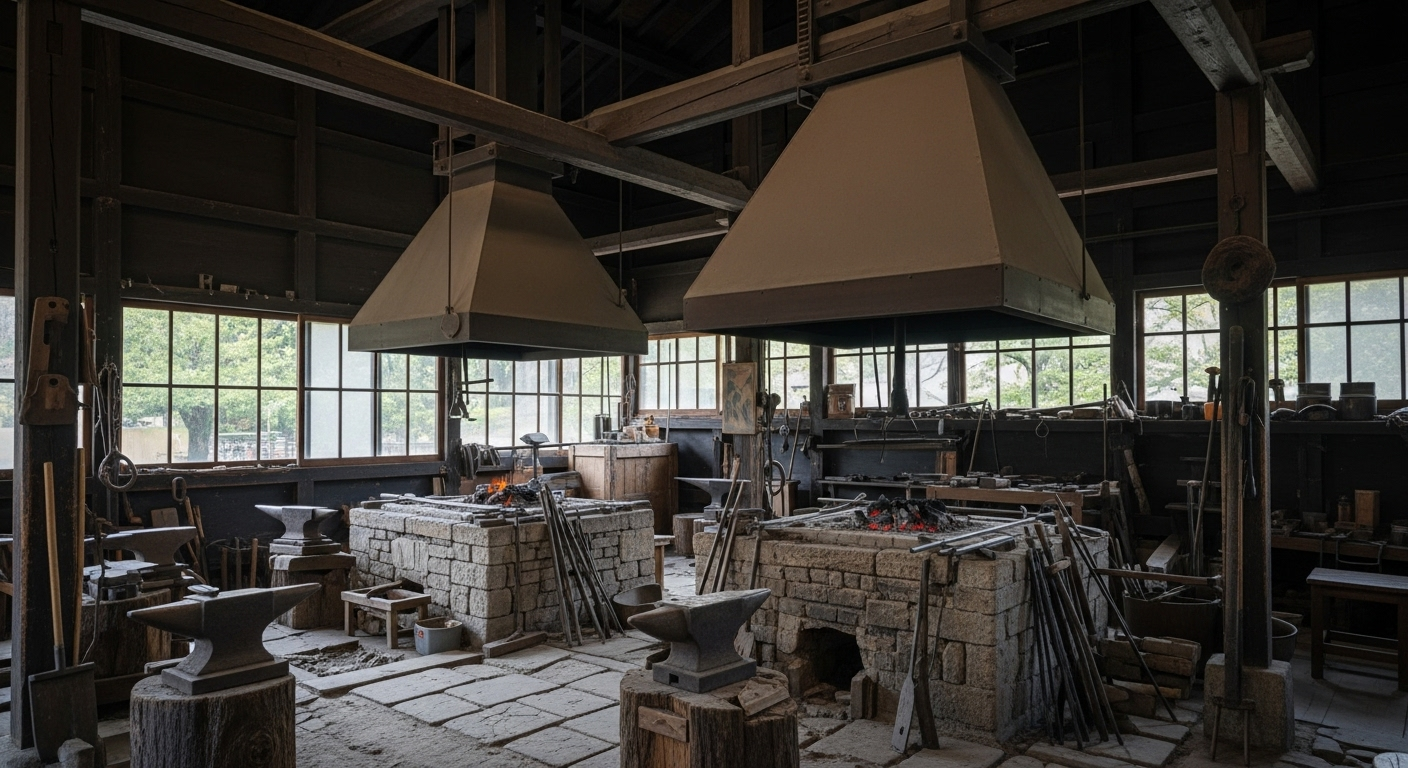
FAQ About Blue Steel #1
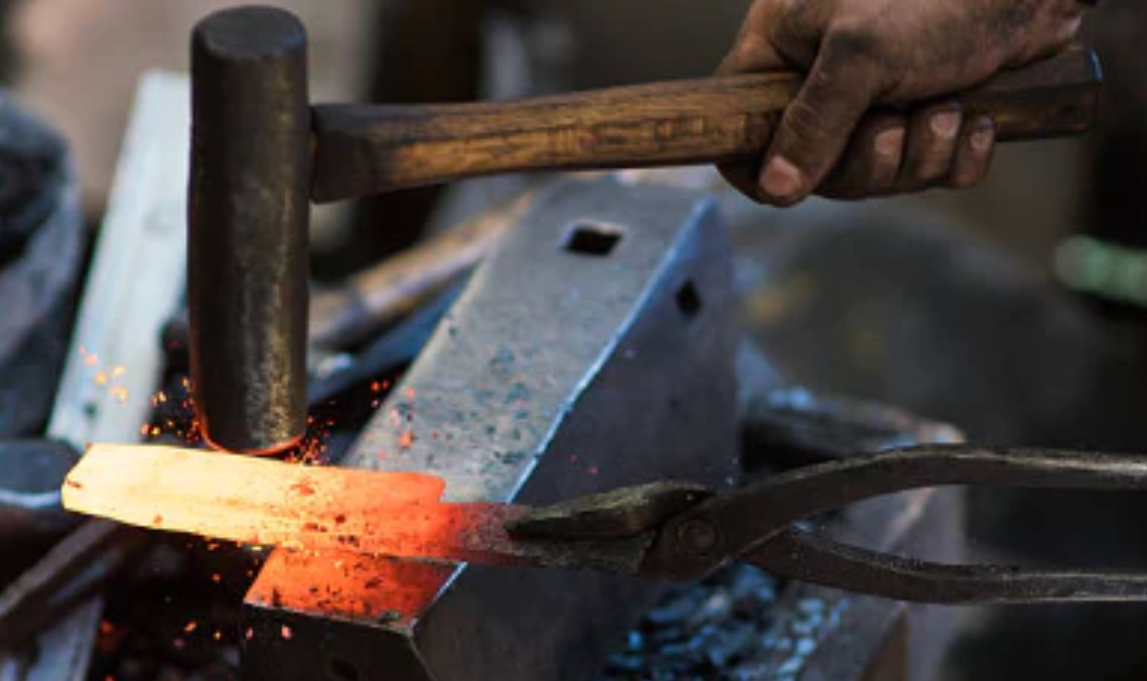
Q1. What is Blue Steel #1?
Blue Steel #1 (Aogami No.1) is a high-grade Japanese alloy steel, created by enhancing White Steel #1 with small amounts of chromium and tungsten. The result is a blade that combines extraordinary hardness, superior edge retention, and improved durability—yet still preserves the clean, responsive feel of traditional carbon steel. It is the steel of choice for artisans and chefs who demand uncompromising performance.
Q2. How does it differ from White Steel #1?
White Steel #1 is ultra-pure and delivers unmatched sharpness, but it is brittle and less forgiving. Blue Steel #1 retains that same sharpness while improving toughness, chip resistance, and edge life. If White Steel #1 is like a scalpel—precise but delicate—then Blue Steel #1 is like a katana: razor-sharp, yet strong and enduring.
Q3. What roles do chromium and tungsten play?
The alloying elements give Blue Steel #1 its strength and resilience. Chromium improves tensile strength and provides mild corrosion resistance, while tungsten enhances wear resistance and stabilizes the cutting edge. These subtle but significant additions create the steel’s signature balance between refined sharpness and lasting durability.
Q4. Who is Blue Steel #1 suited for?
Blue Steel #1 is best suited for professional chefs working in high-volume kitchens, dedicated home cooks who appreciate handcrafted performance, and users experienced with carbon steel maintenance. It is also an excellent choice for anyone who seeks a knife that combines power, character, and tradition.
Q5. How should I care for a Blue Steel #1 knife?
Although Blue Steel #1 is slightly more corrosion-resistant than White Steel, it is still a carbon steel and requires proper care. Always dry the blade immediately after use, avoid prolonged contact with acidic or salty foods, and store it in a dry, well-ventilated space. For long-term storage, apply a thin coat of protective oil. With consistent care, Blue Steel #1 knives remain sharp and reliable for decades.
Q6. Does it chip easily?
Compared to White Steel, Blue Steel #1 is more resistant to chipping thanks to its added toughness. However, it is still a high-hardness steel, so proper technique and care are essential. Avoid cutting bones, frozen foods, or using the knife on overly hard surfaces. With respect and mindful handling, the edge will remain sharp and true.

Comprehensive Guide to White Steel and Blue Steel
White Steel #2 vs. Blue Steel #2: Discover the key differences that shape sharpness, durability, and performance in Japanese knives.

Comprehensive Guide to Blue Steel #1 and Blue Steel #2
Blue #1 vs. Blue #2: Explore why small shifts in alloy balance create big differences in edge retention and toughness.

Japanese Knife Materials
The steel behind a Japanese knife defines its sharpness, durability, and care. From traditional carbon steels like White #2 and Blue #2 to modern innovations such as Ginsan and ZDP189, each material offers its own balance of performance and maintenance. This guide explores how these choices shape the knives we use today.
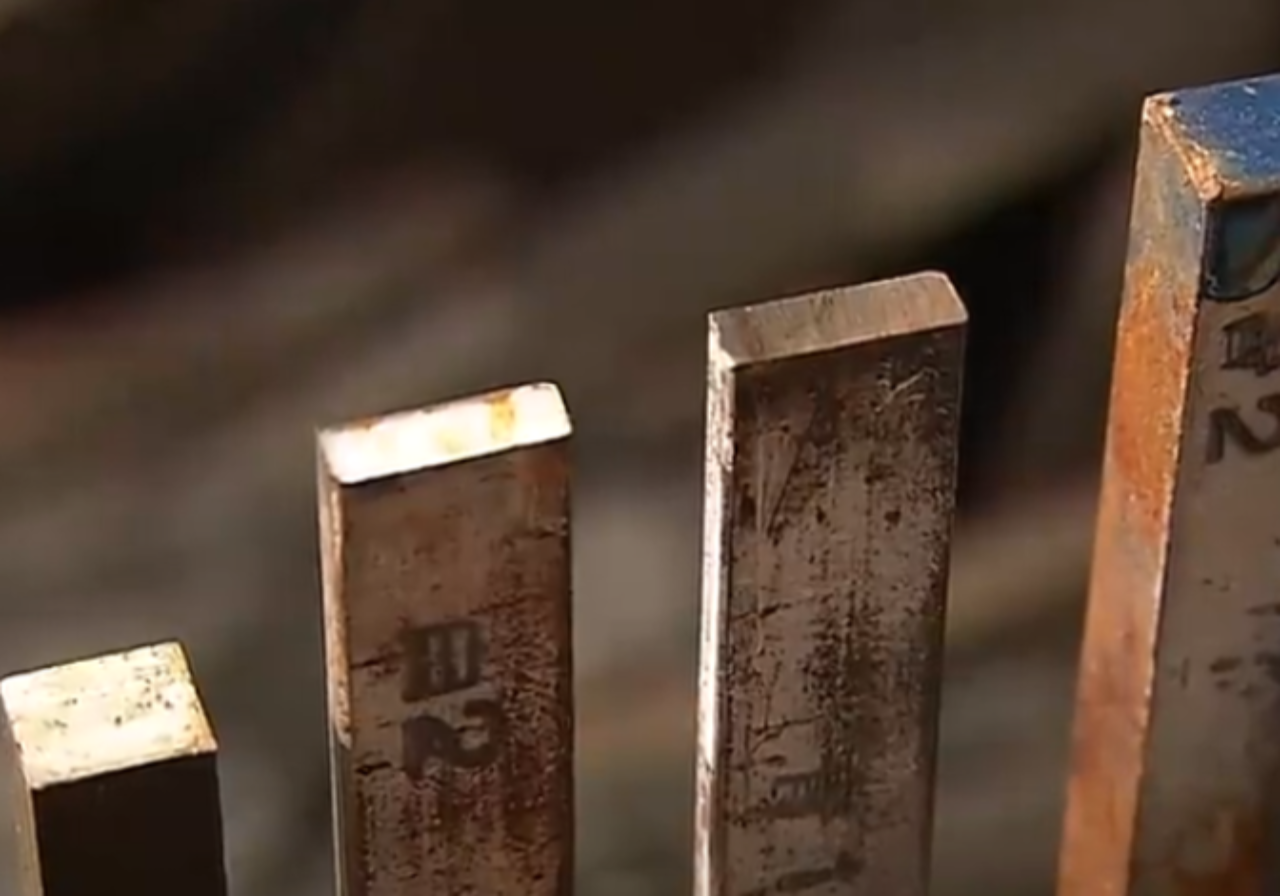
Yasuki Steel: The Heart of Japanese Knives
Yasuki Steel has long been the legendary core of Japanese knife-making. With the 2023 transition from Hitachi Metals to Proterial, its future is at a turning point. The continued yet uncertain production of White and Blue Steel—and the arrival of new stainless options—raises important questions for makers, users, and collectors alike. Understanding Yasuki Steel is more essential than ever to grasp the future of Japanese knives.
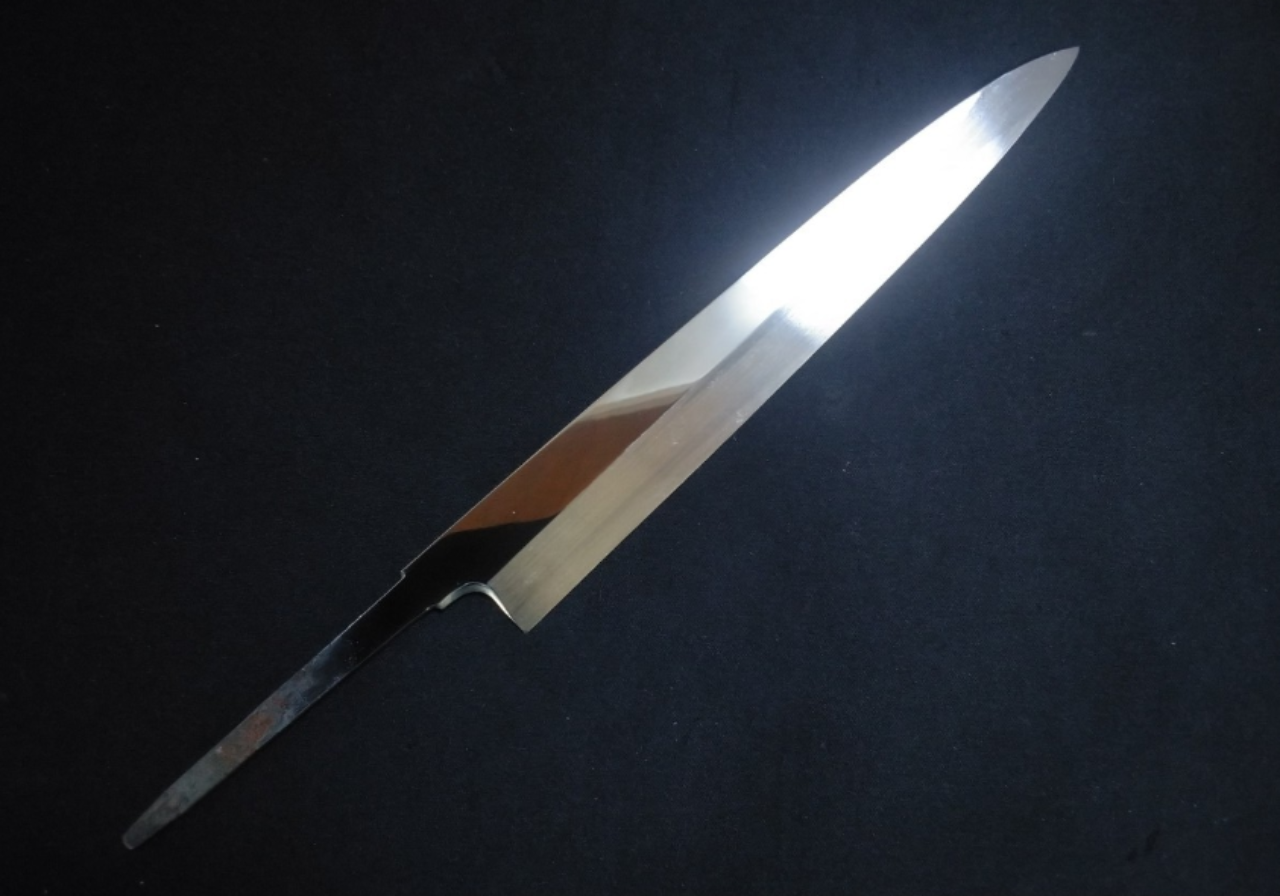
Blue Steel #1: The Pinnacle of High-Carbon Steel
Blue Steel #1 is prized for its sharpness, durability, and cutting performance. Its blend of tungsten and chromium delivers precision, making it ideal for sushi, sashimi, and other delicate tasks. Though demanding to maintain, in the hands of skilled chefs and enthusiasts it offers a lifetime of unmatched performance—embodying the very pinnacle of Japanese craftsmanship.
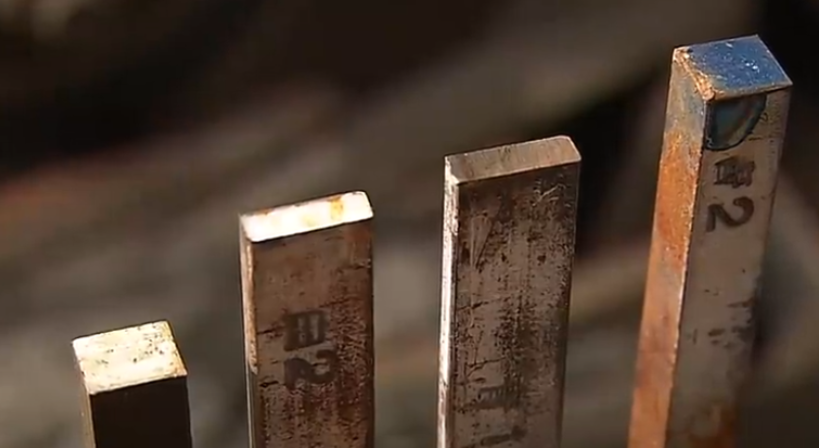
The Origin of Craftsmanship
-
A Masterpiece of Craftsmanship: The Art and Technique Behind Blue Steel #1
The Blue Steel #1 knife is not just a tool. It is a masterpiece of craftsmanship, born from the careful forging and heat treatment by top-tier artisans. By diligently enhancing the potential of this steel, we create a blade that offers unmatched sharpness and durability, surpassing all expectations.
-
For us artisans, working with Blue Steel #1 is a source of great pride. Shaping this steel requires meticulous attention to detail, employing refined techniques that have been honed over years of practice. The result is a knife that is not just functional, but a work of art, forged through time and skill.
-
When you hold this knife, you are not just using a tool; you are connecting with the soul of craftsmanship. Each cut becomes an experience that transcends the ordinary, as you interact with a blade that carries the essence of tradition and dedication.
-
Using a Blue Steel #1 knife is more than just cutting—it is about experiencing the fusion of technique and artistry. The sharpness and feel of the blade breathe life into your cooking, providing a unique sense of fulfillment every time you use it.
How Japanese Knives Are Made: The Sakai Tradition
VIDEO PROVIDED: JAPAN TRADITIONAL CRAFTS AOYAMA SQUARE (YOUTUBE)
-
Sakai Forged Blades — Six Centuries of Unrivaled Craftsmanship
Loved by chefs around the world and trusted by 98% of Japan’s top culinary professionals, Sakai knives are more than tools—they are the living legacy of over 600 years of master craftsmanship.
-
At KIREAJI, we work directly with the Shiroyama Knife Workshop in Sakai, Japan, ensuring every blade is hand-forged, finished to perfection, and shipped straight from the workshop to kitchens across the globe. No middlemen. No mass production. Only authentic, artisan-made knives, crafted to elevate your cooking for a lifetime.




